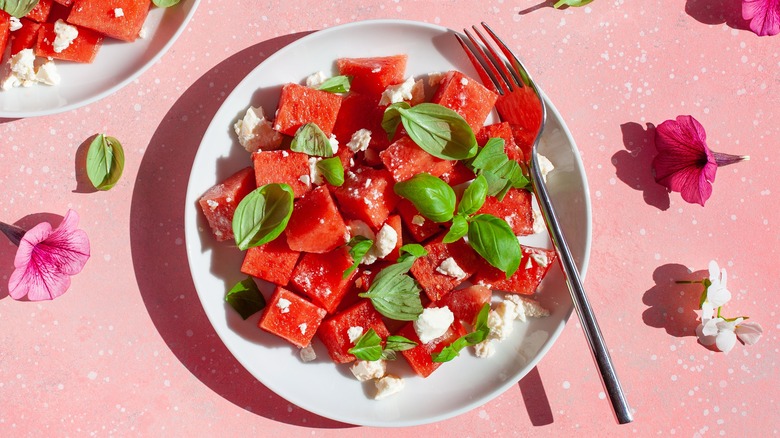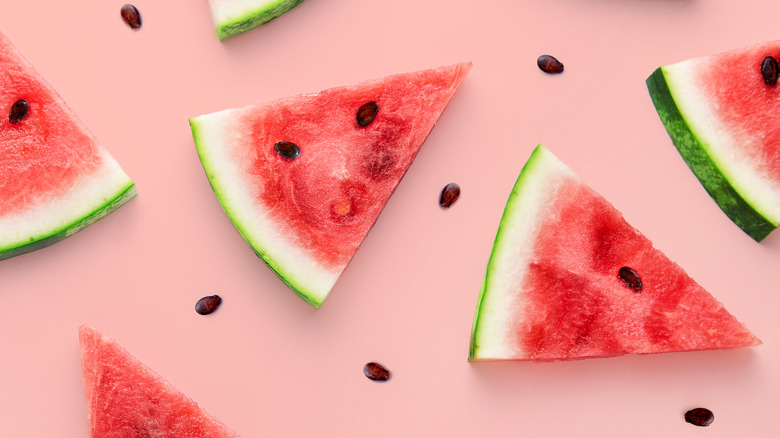Why Any Watermelon Salad Should Be Eaten All In One Sitting
No backyard barbecue is complete without watermelon salad. Take a savory approach and mix in chopped cucumbers, red onions, sliced avocados, and cubes of feta, all before coating in a sweetly tangy vinaigrette. Alternatively, a sweeter salad with a medley of berries, fresh mint, lime zest, and a splash of honey can be the perfect end to a summery meal. Any way that you dress it up, watermelon salad is a crowd-pleaser that's almost always devoured in minutes, which is good news because it's not something that keeps particularly well.
Watermelon is beloved for its juiciness, but the fruit can reach a point where it becomes too juicy. Super hydrating, watermelon is actually made up of roughly 90% water. Given this high concentration of moisture, it can easily morph from pleasantly refreshing to sadly soggy after being cut into pieces. Consequently, this can affect the taste and texture of a salad the longer that it sits, making leftovers a major no-no.
Essentially, by releasing so many of its juices, watermelon can start to dilute flavors and throw off the recipe's balance, meaning that it may need to be redressed if kept as leftovers. However, the even bigger issue is that with all that liquid, the salad will become soft and mushy, which is neither appetizing for the palate nor the eyes. As a result, watermelon salad is best enjoyed immediately and in its entirety.
How to effectively minimize the mush
Starting with the right ingredients is key. While a ripe watermelon will be richer and sweeter, it will also be juicier. That said, you could put a slightly underripe fruit to use in savory and cooked renditions like a grilled watermelon salad. But, you could still use a perfectly ripe melon in a fresher preparation, tackling excess moisture with a few helpful tips.
The most effective way to keep a watermelon salad in prime condition is to store ingredients separately until assembly. Doing this will ensure the melon won't saturate the crisper components of the salad. Additionally, you might want to consider trying to remove some of the watermelon's moisture before combining everything together. After chopping or slicing the melon, sprinkle either salt or sugar over the fruit to help draw out the liquid. Then, drain the liquid and craft your salad as follows, enjoying it shortly thereafter.
If leftovers are inevitable, watermelon salad can still be saved. Start by straining the juices pooling at the bottom of the salad bowl, drizzling them over another salad, or dipping bread in them as a waste-free snack. Otherwise, you could add starchy ingredients to soak up some of the moisture — toss in homemade croutons and make a fruity panzanella. Just remember that even with your best efforts to reduce sogginess or salvage leftovers, salads (watermelon or otherwise) are always best eaten promptly after being made.

